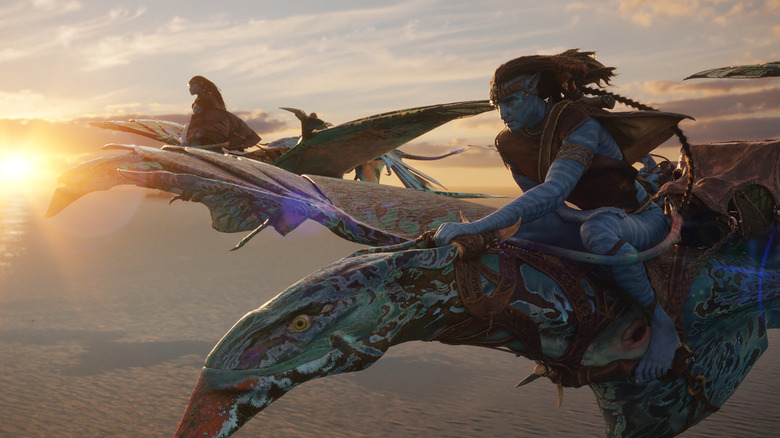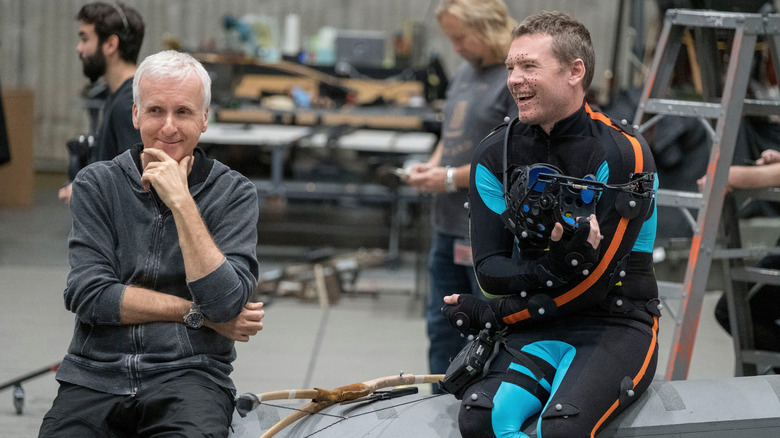This Was The 'Paradigm Shift' For Avatar: The Way Of Water's FX Team
It's easy to see why "Avatar: The Way of Water" took over a decade to make it to the big screen. The extravagantly beautiful sequel was the passion project of James Cameron, and if you thought he was going to follow up the highest-grossing film of all time with passable visual effects, then you clearly haven't heard him speak in interviews. He's a bit of a perfectionist who wants to make sure that everything on the screen looks as best as possible. With "The Way of Water," the world of Pandora has never felt more alive, and that can largely be attributed to the hard-working folks at Wētā FX.
The effects company behind such recent projects as "Black Adam" and "Wakanda Forever" had worked with Cameron on the original "Avatar," where they were initially referred to as Wētā Digital. A project like "The Way of Water" was presented not only with the challenge of bringing the same level of care the first film got, but also keeping up to date with Cameron's groundbreaking developments, namely with the decision to shoot large portions underwater.
Seeing that the actors were largely acting against an environment that was going to be built around them in post-production, Cameron had to prepare them in other ways. But where their journey as performers ends, Wētā's journey begins. There's still so much to be done when it comes to digital makeup, especially since the actors playing Na'vi characters are wearing gray motion capture suits rather than traditional costumes. But when it came to "The Way of Water," a new process was implemented that helped both Cameron and Wētā get what they needed at the same time.
Rough Camera Pass became a helpful process
During a press conference attended by /Film, Lightstorm VFX Supervisor Richie Baneham talked about how the original "Avatar" shortened the process from when something was shot to when it needed a digital touch up. "Towards the end of the first movie, we ended up with two stages running as a way to test the files to make sure they stood up for Jim," says Baneham.
Working on "The Way of Water," however, led to a process called Rough Camera Pass (RCP), which allowed VFX editors to see the raw footage before it's all in their court:
"We go through a — I would say a paradigm shift in filmmaking where we introduce the editors into the dailies much, much sooner. And I say 'dailies,' I mean capture dailies. So, they down select to a particular select group of takes. And we basically produce a moment in time, a camera load for all intents and purposes. And from there, we basically tell the story in shots. And that's what the rough camera pass is. For us, it's two-fold. It vets the scenes for Jim, but it also gives us a first crack at editing the scene and empowers the editors..."
Seeing as most of the film had to be digitally constructed, this was a genius way to give the VFX folks more time to come up with ideas of their own. It became clearer than ever before, as they now had something to work off before getting into the hardest part of the process. Cameron was behind many of the ideas of "Avatar," but it can't be undersold how vital these teams were to making Pandora a living reality.
"Avatar: The Way of Water" is now playing in theaters nationwide.

